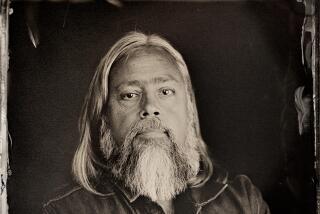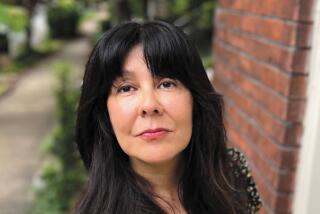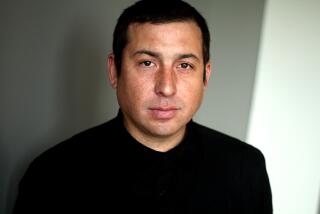Julia Bogany, venerated Tongva elder who fought for her tribeâs recognition, dies
For her school project on the Indigenous Tongva people, Marissa Aranda sought guidance from her great-grandmother. She asked her nana: How does it feel to be a Tongva woman?
âI feel invisible,â Julia Bogany responded.
Without missing a beat, Marissa told her nana she felt the same.
For years, Bogany traveled California, using arts and crafts as an entry point to teach children about her tribe. She was constantly teaching, and answering the same questions.
But it wasnât enough. The exchange with her granddaughter crystalized her lifeâs mission. She would break free from the chains of invisibility for the sake of her family and future generations. She assured Marissa that she would be seen.
From dusk to dawn, Bogany spread the gospel of the great Tongva people to correct history and revitalize her culture. Her lessons transcended classrooms and permeated everyday life through art and conversation.
âShe worked tirelessly to gain recognition for her tribe, to counteract the âerasureâ that colonial systems brought with the missions, the ranchos, and the American land takeover,â the Gabrielino Tongva Band of Mission Indians said in a statement. âJulia consulted with educators, trained teachers and school boards on how to revise their curriculum to reflect the correct history of California and California tribes.â
After decades of work, Bogany died March 28 of complications from a stroke, said Gina Lamb, a media studies professor at Pitzer College. Bogany was 72.
âTo those who knew Julia, she was an unstoppable force, in perpetual motion,â Pitzer College wrote in a statement. âAlways teaching, Julia loved what she did every single day and somehow had limitless energy and care for people.â
Born in Santa Monica in 1948, Bogany received little attention from her mother, a homemaker, and her father, a gardener by day and cook at night. She found solace in her grandmother, Julia, who died when Bogany was 2. Her parentsâ eventual divorce marked the beginning of her turbulent, formative years. She moved frequently into different family households. At one point, she lived with her stepmother in Tijuana, where she learned Spanish and tried her hand at teaching.
All the while, she knew her motherâs side was Gabrielino, but her mom hardly talked about the tribe. Bogany had only heard the stereotypes and jabs. But at 13, she received confirmation of her heritage when her mother gifted her a family tree and paperwork from the Bureau of Indian Affairs. This encouraged her to start attending tribal group meetings as an observer, and she immersed herself in resources that could provide further enlightenment.
As she was exploring her ancestorsâ history, she earned her GED diploma and then taught preschool for 35 years, helping make ends meet and providing for her family. She squeezed in time to volunteer with the homeless community and help former inmates adapt to civilian life.
Over the years, she became a revered Tongva elder. She was a repository of obscure factoids. She made it a point to discover connections to her heritage even as she performed mundane tasks. She relished, for instance, that on her long drives back to her San Bernardino home, she was using the same pathways her ancestors once used. And she made sure her children, grandchildren and great-grandchildren knew their heritage, too.
âItâs not good enough to just know that youâre Tongva,â she once said. âYou have to really know who you are and where your people [have] been and how we got here ... to this place today because thatâs how we became invisible. We were just there, just surviving. But today weâre out and about with everyone else and being able to say, âIâm Tongva.ââ
Her accolades and titles provide a snapshot of her lifeâs work. Bogany served on the Tongva Tribal Council and was a member of the California Native American College Board. At Pitzer College, she was the elder-in-residence for the collegeâs Native Youth to College Program. In 2021, the California Missions Foundation awarded her the âChairmanâs Award,â which honors those who have made an impact on the study of early state history. In 2010, the Aquarium of the Pacific selected her for its âHeritage Awardâ during its annual Native American festival, Moompetam.
Bogany pursued art as a means of increasing Tongva visibility. She regularly acted as a consultant, providing guidance and insight to local artists interested in honoring Indigenous communities â a role she played in the creation of sculptures on a bridge on the 210 Freeway. Woven Tongva baskets flank the bridge spanning the eastbound 210 in Arcadia. At Cal State Dominguez Hills, a 47-foot mural of Bogany sitting underneath an oak tree decorates the facade of the student residence hall. The creator of the mural, artist iris yirei hu, said the work was placed on campus where it would grab attention, provoking students to remember Bogany as the âembodiment of the history and future of this land.â
âArt, I feel, is one of the only spaces where you can express this radical vulnerability,â the artist said, âwhere you can practice intimacy and where you can bring together faraway or disparate connections.â
Boganyâs friendly demeanor attracted people from all walks of life. She was in demand as a speaker and lectured in college classrooms â sometimes multiple times a day. And she made it a point to engage with her followers on her social media platforms.
âItâs hard to explain the breadth and depth of all the things she did,â Lamb said. âThereâs not one thing you name except that she had a mission to make the Tongva visible, and she achieved that goal.â
Bogany is survived by her husband, Andrew Bogany, four children, 10 grandchildren and 11 great-grandchildren.
More to Read
Sign up for Essential California
The most important California stories and recommendations in your inbox every morning.
You may occasionally receive promotional content from the Los Angeles Times.











